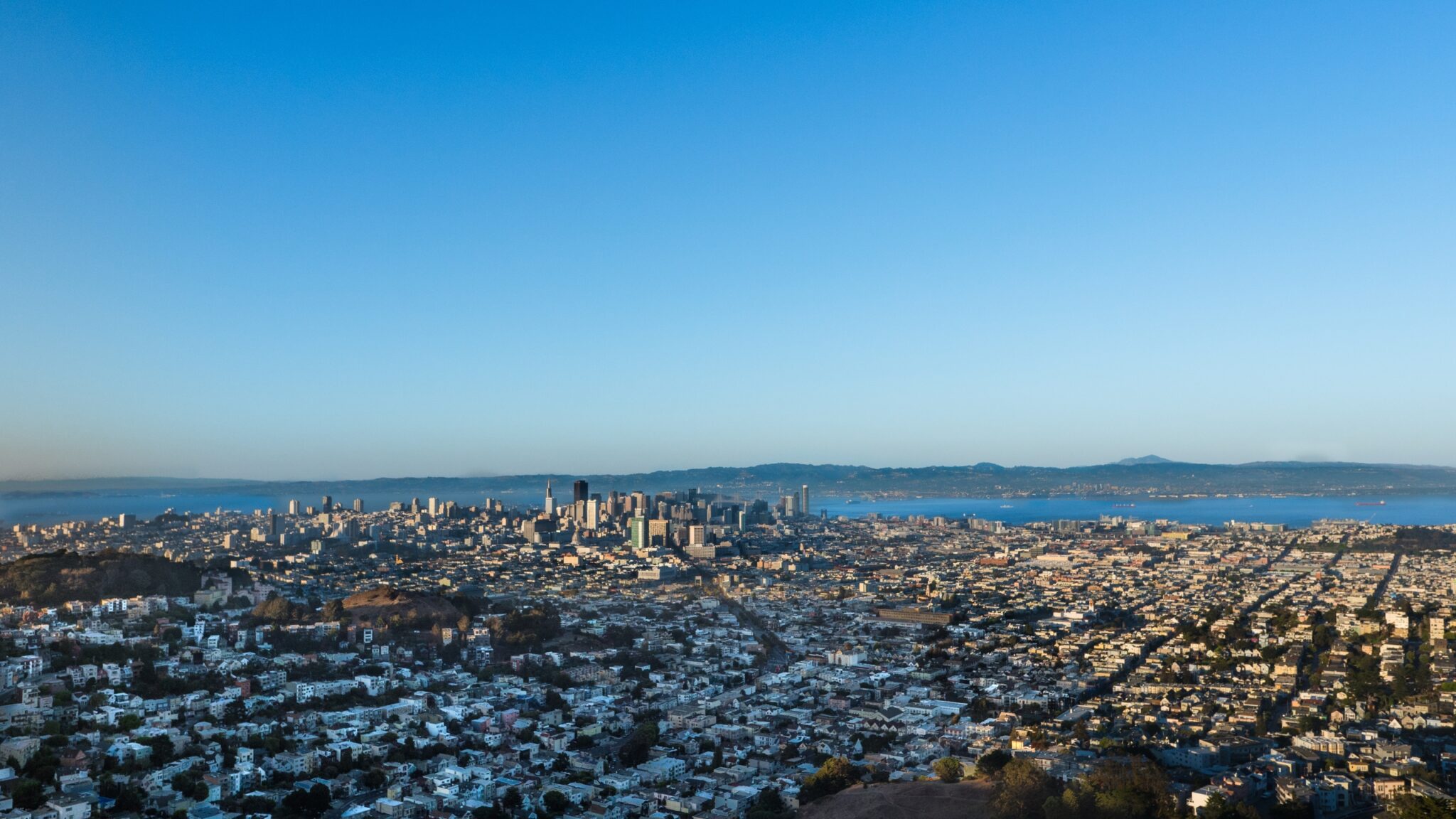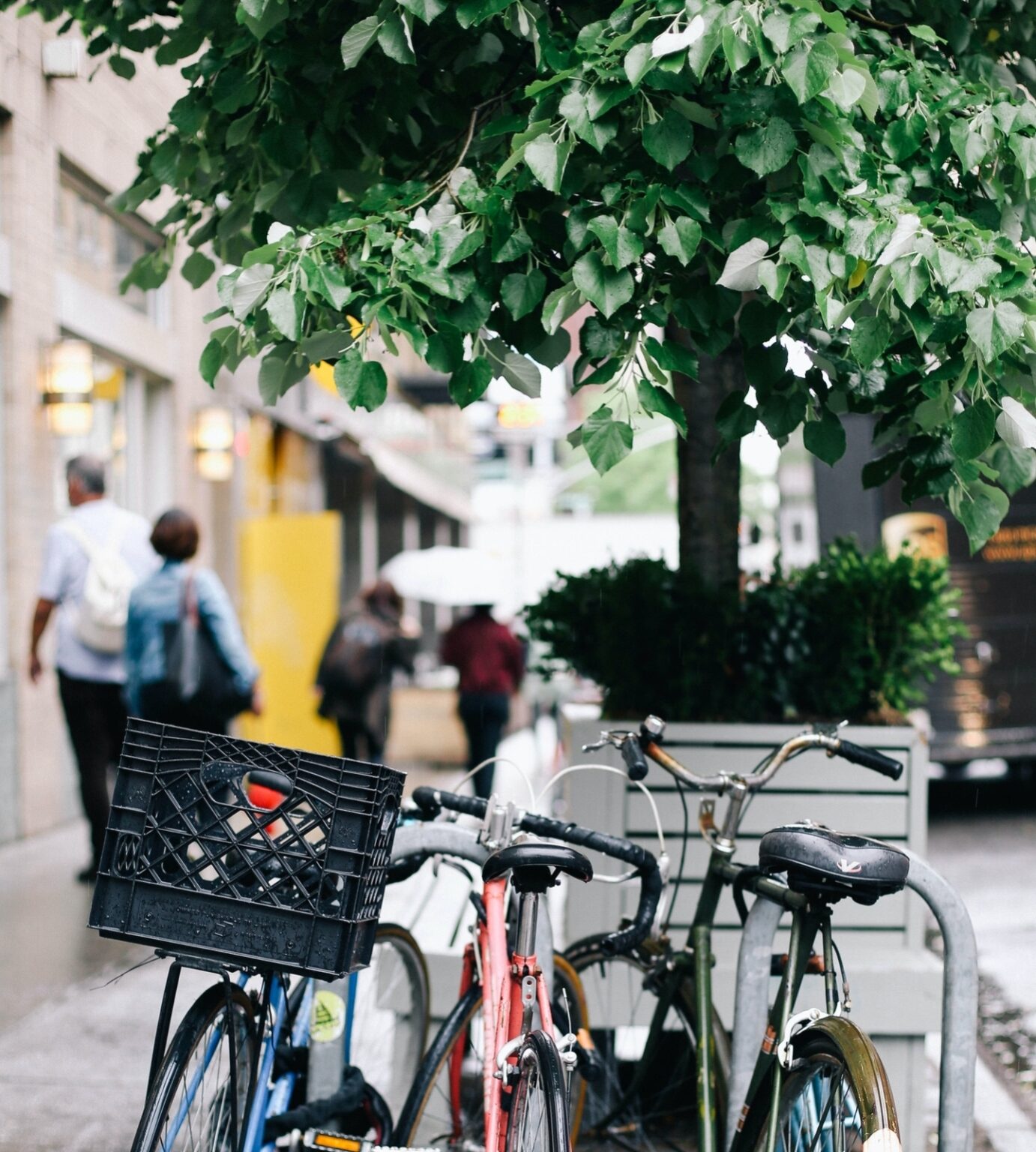Intelligent Evolution: Five Modern Innovations for the Post-COVID City
From healthcare to highways, the possibilities for improving our cities are endless. The pandemic brought a renewed attention to the pitfalls of Western healthcare design, recreation, roadways, and the potential of smart city technology to serve and protect citizens. Read on for five design predictions for post-COVID cities, from the experts.

Words:
Team ENSEMBL
With the outside world all but closed and distancing measures put in place, urbanites sequestered themselves in their homes throughout the COVID-19 pandemic. That was 2020. 2021 brings vaccines, herd immunity, and a promise of returning to life as we once knew it. But will things return to the way they were?
It is not yet clear what will happen when citizens and cities reunite. New insights on the spread of disease, the mental health effects of working from home, and the restructuring of entire industries have many architects, designers, and advocates thinking about how to improve our post-COVID cities. The past was filled with flaws – and the future brings with it an opportunity to improve the blueprint for urban life. We’ve rounded up the five most promising design ideas for more purposeful urban living in a post-COVID world.
Hospitals of the Future
By late March of 2020, it was clear that even the world’s best hospitals were poorly equipped to handle the rapid influx of COVID patients. As emergency and intensive care wards from New York to Milan overflowed with struggling victims and overworked health staff, the physical hospital buildings looked the same as the day they were built–and that was the problem.
In a world where climate change promises increased threats of communicable disease and the next health threat is never certain, policy makers and health professionals are recognizing flexibility as the most valuable trait a healthcare system can have. “Instead of ‘value engineering’ out everything that makes a project resilient, we should engineer in added value,” says Suzanne McCormack, Global Healthcare lead at consulting firm WSP. Increasingly, hospital architects are designing buildings that adapt to the unknown through easily convertible wings and materials that prevent the spread of disease.
Others advocate for the adoption of decentralized healthcare infrastructure, which arguably allowed Germany’s COVID death rate to be six times less than the U.K.’s. Germany’s healthcare system divided responsibility for hospital reorganization, testing distribution, and contact tracing among local authorities, leading to faster COVID responses on the local level. Taken to another level, some suggest modifying this model of decentralization so that cities become healthcare centres in and of themselves, leveraging diagnostic technology and preventive medicine to build infrastructure that increases access to medical advice and promotes healthy lifestyles.


Long term solutions for long term care
Some of the pandemic’s earliest and hardest hit populations were the elderly residents of nursing homes. Exposed to staff members and confined to small rooms, often shared between residents, standard protocols were not enough to protect society’s most vulnerable from the terrors of an invisible killer. By March 2021, more than 170,000 long term care residents died from COVID in the United States.
Looking forward, health experts advocate for lower density housing units and designs that promote low-contact appliances to reduce points of transmission. Of equal concern is the impact complete isolation can have on the psychological state of residents. Rather than reconfigure indoor spaces to discourage physical interaction, experts advocate the design of “resilient” spaces that can be easily reconfigured through sliding doors, walls, and other physical infrastructure to easily facilitate or prevent physical contact between residents and staff.
Urban Digital Infrastructure
On a broader city scale, COVID has exposed weaknesses in the modern city’s ability to keep tabs on itself. Though most governments implemented contact tracing programs, they did not do enough to stop the spread of illness through populations. The rapid introduction of 5G technology introduces opportunities for cities to better monitor social and health problems as they arise and offer amenities to citizens such as public wifi and support for local businesses.
One effort is already underway in London, where architecture studio, We Made That, is advising the mayor on a smart city project that would enable the city to track garbage collection, traffic, spending habits, and provide insights for new infrastructure projects. The challenge of balancing privacy with digital efficiency remains a concern for planners and citizens alike, but ‘smart city’ elements will likely become more common in a post-covid world.


Return to the Restaurant
There was perhaps no industry more sorely missed during the pandemic than restaurants. Once the social hubs of the city, most were reduced to online or curbside only operations–if they were lucky enough to survive.
While most people are clambering to return to the din of a dining room, industry leaders doubt things in the food business will ever go back to the way they were. With more Americans ordering in than ever, and the food delivery industry is expected to reach $34.6 billion by 2026. In order to compete with the comforts of home, restaurant designers are already planning for ways to make the dining experience more personal.
Restaurant designer Patricia Urquiola is anticipating “restaurants where privacy is key” and “intimate atmospheres” act as a selling point. Also here to stay are the outdoor patio covers that enabled even cold-weather New Yorkers to dine outdoors in the winter months.
“Redesigning outdoor spaces with all the creativity, coziness, and amenities of indoor spaces guides a certain mood that may not have been present or considered before,” says architect Michael Hsu. With unique foods available at home, restaurants will become more about the experience than ever.
Greening the Highways
With increasing numbers of people expected to work from home after the pandemic, it could be time for cities to rethink their transport systems. Already, initiatives are underway in places like Xiamen, China and Mumbai to introduce bike highways and garden streets.
This renewed emphasis on hyperlocal communities and pedestrian-friendly infrastructure reflects a return to the Garden City planning philosophy of the early twentieth century but with a twenty-first century emphasis on adaptability. Rather than existing as pure arteries, bike paths and streets are integrated into the commercial landscape, bringing together the public and private spheres in innovative ways. Integrated with smart city infrastructure, bicycle commuting might be a solution that “actually works really well” in a post-pandemic world, says Scott Duncan of SOM.

More Stories
-
 17.11.2025 | News
Black Friday Sale - 45% off everything *including Stackware*
17.11.2025 | News
Black Friday Sale - 45% off everything *including Stackware*
Our biggest (and only) sale of the year is here. Over $460++ off cookware. 45% off everything.*
-
 05.11.2023 | News
Celebrating with Rolls-Royce
05.11.2023 | News
Celebrating with Rolls-Royce
Bringing design, innovation, sustainability, performance, luxury, and craftsmanship together.
-
 01.11.2023 | News
Utility Patent Granted
01.11.2023 | News
Utility Patent Granted
The ENSEMBL: Stackware Removable Handle has received a utility patent.
Free shipping on all North American orders.